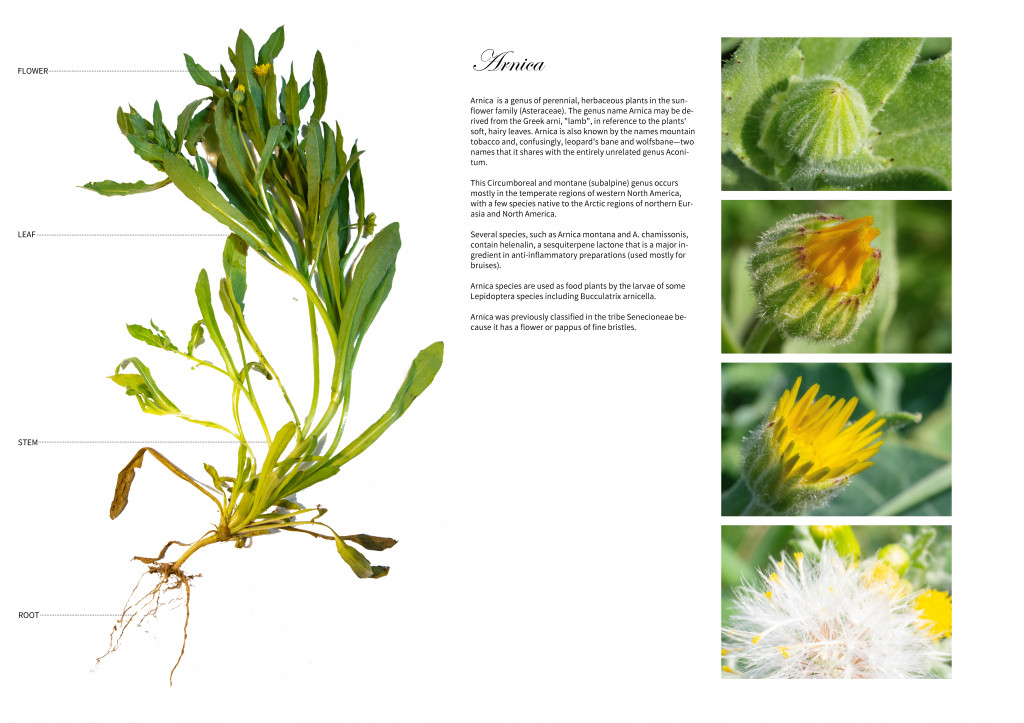Arnica
Arnica is a genus of perennial, herbaceous plants in the sunflower family (Asteraceae). The genus name Arnica may be derived from the Greek arni, “lamb”, in reference to the plants’ soft, hairy leaves. Arnica is also known by the names mountain tobacco and, confusingly, leopard’s bane and wolfsbane—two names that it shares with the entirely unrelated genus Aconitum.
This Circumboreal and montane (subalpine) genus occurs mostly in the temperate regions of western North America, with a few species native to the Arctic regions of northern Eurasia and North America.
Several species, such as Arnica montana and A. chamissonis, contain helenalin, a sesquiterpene lactone that is a major ingredient in anti-inflammatory preparations (used mostly for bruises).
Arnica species are used as food plants by the larvae of some Lepidoptera species including Bucculatrix arnicella.
Arnica was previously classified in the tribe Senecioneae because it has a flower or pappus of fine bristles.

“Ecological Interactions: Identifier Species” is a project of IaaC, Institute for Advanced Architecture of Catalonia, developed at Masters in Advanced Ecological Buildings in 2019/2020 by Students: Yue Zhang and Faculty: Jonathan Minchin